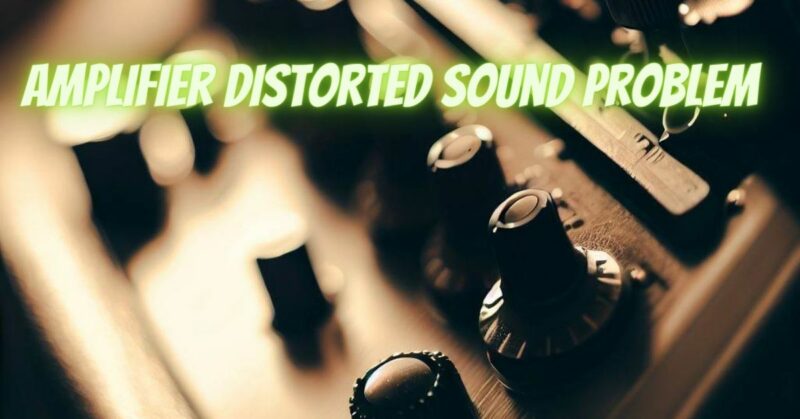Experiencing distorted sound from your amplifier can be frustrating, as it negatively impacts the audio quality and listening experience. However, with a systematic troubleshooting approach, it is possible to identify and address the root causes of amplifier distortion. In this article, we will guide you through the process of troubleshooting common amplifier distorted sound problems, helping you resolve audio issues and restore optimal sound quality.
- Check Speaker Connections:
Start by inspecting the speaker connections. Loose or improperly connected speaker wires can introduce distortion. Ensure that the speaker wires are securely connected to both the amplifier terminals and the speakers themselves. Verify that the polarity (+ and -) of each wire is correctly aligned with the corresponding terminals.
- Verify Source Components:
Next, examine the audio source components. Faulty cables, damaged connectors, or poor-quality audio sources can contribute to distorted sound. Try using different audio cables or connecting a different audio source to rule out issues with the source components. Additionally, check if the source device’s volume level is set too high, potentially causing distortion when amplified by the amplifier.
- Adjust Amplifier Settings:
Review the amplifier’s settings and make adjustments as needed. Ensure that tone controls, such as bass and treble, are set to neutral or balanced positions. Extreme settings on tone controls can introduce unwanted distortion. Also, verify that any built-in effects or enhancements are disabled or set conservatively to avoid excessive processing that may degrade the sound quality.
- Inspect Amplifier Cooling:
Overheating can lead to distorted sound in amplifiers. Check if the amplifier is properly ventilated and not obstructed by objects or placed in a confined space. Ensure that cooling fans, if present, are functioning correctly. Excessive heat buildup can cause thermal stress on components, leading to distortion. If necessary, consider using external cooling solutions, such as cooling fans or amplifier cooling racks.
- Assess Speaker Placement:
Improper speaker placement can impact the sound quality and contribute to distortion. Make sure that the speakers are positioned correctly and not too close to walls or corners, as this can result in boomy or muffled sound. Experiment with speaker placement and room acoustics to find the optimal positioning that minimizes distortion and enhances sound clarity.
- Check for Amplifier Overload:
An amplifier pushed beyond its power limits can produce distorted sound. If you consistently play audio at high volumes or with demanding content, it is possible that the amplifier is being overloaded. Consider reducing the volume level or using speakers with higher power handling capabilities. Additionally, ensure that the amplifier’s power rating is suitable for the connected speakers.
- Consult Professional Service:
If the distortion issue persists after performing the above steps, it may indicate a more complex problem requiring professional assistance. Contact the manufacturer’s customer support or a qualified audio technician to diagnose and repair any internal amplifier faults or component issues.
Conclusion:
Distorted sound from an amplifier can be resolved by following a systematic troubleshooting approach. By checking speaker connections, verifying source components, adjusting amplifier settings, inspecting cooling, assessing speaker placement, watching for amplifier overload, and seeking professional service when necessary, you can identify and resolve common causes of amplifier distortion. Remember, clear and undistorted sound enhances your audio experience, allowing you to fully enjoy your music, movies, and other audio content.


